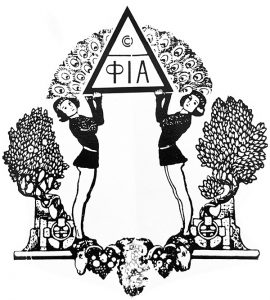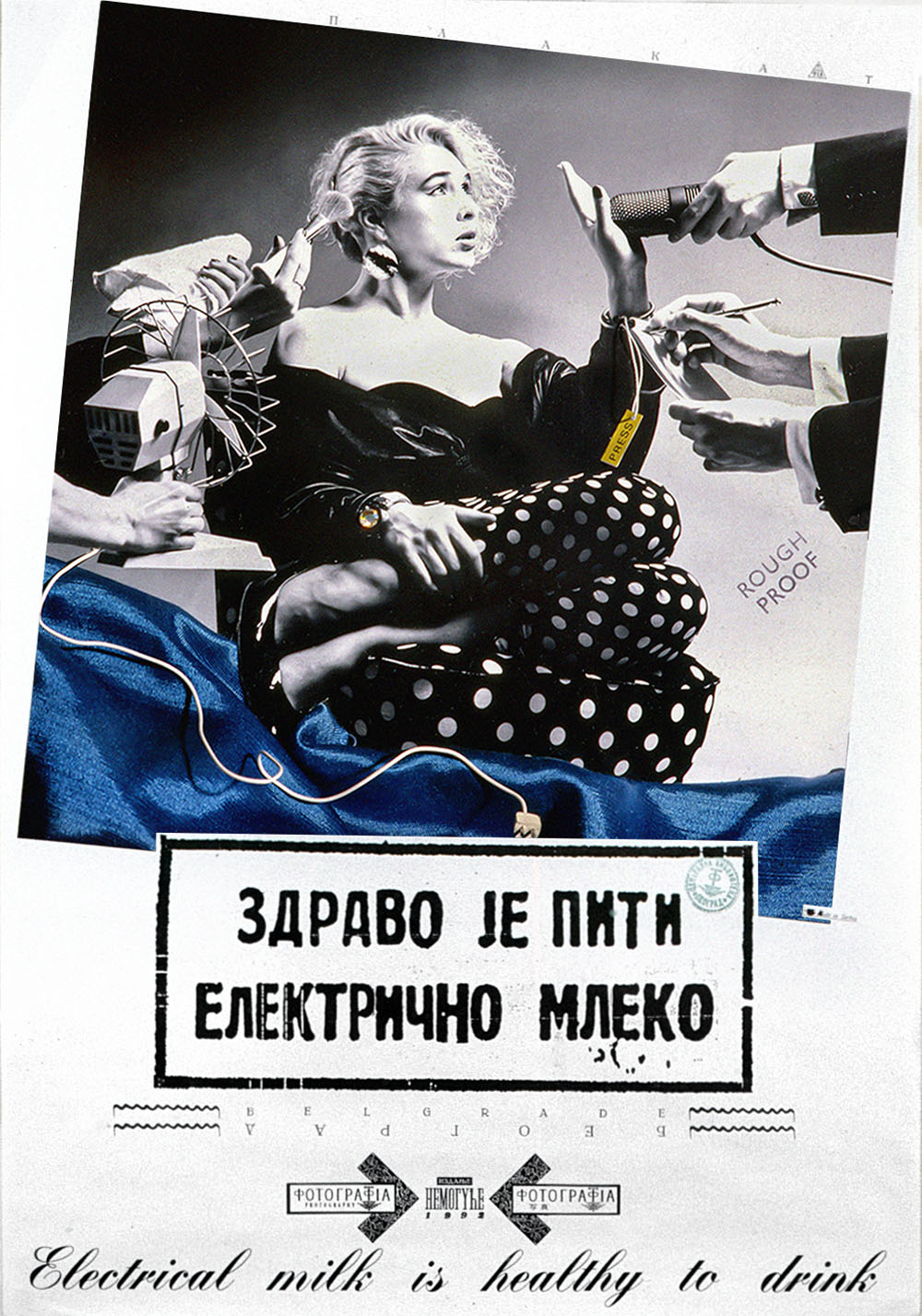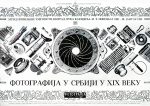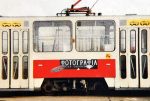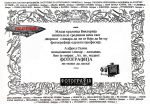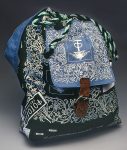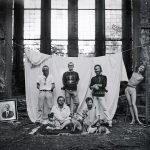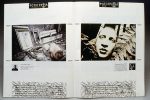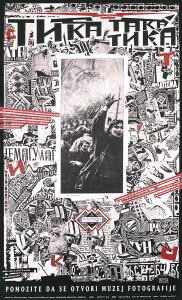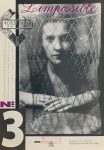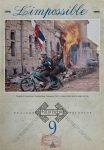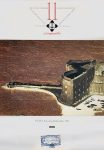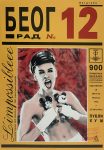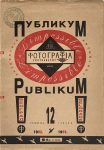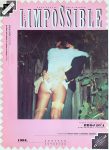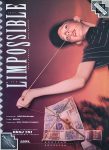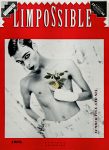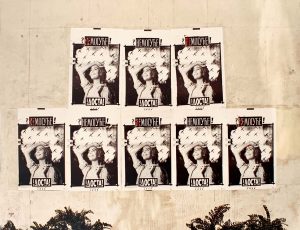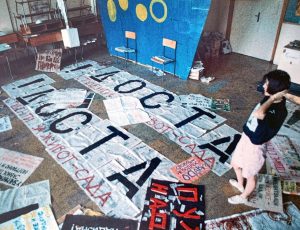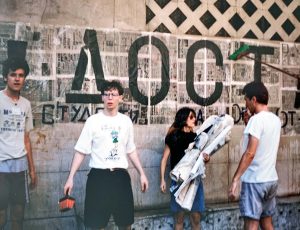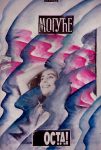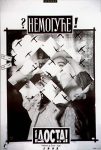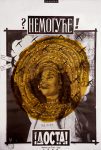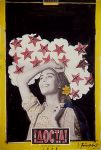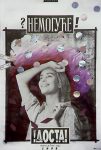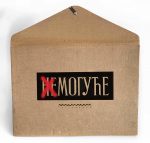FIA Art Group
FIA Group was founded in 1989 by Djordje Milekić (aka Stanislav Sharp) and Nada Rajičić (Ray). The mission of the FIA group was to improve the position of photography, printing, and design in Serbia prevailing wartime environment and poverty. Their projects combined different media – photography, design, print media, and multidisciplinary events reflecting social and political trends. FIA mastered an alternative and daring way of thinking and creative problem-solving in an environment of limited resources. They were one of the pioneers of the successful combination of marketing and promotion of Serbian companies and long-term orientation of investment in culture and promotion of local artists, especially the younger generation.
During their work, they collaborated with numerous authors and cultural institutions, especially with the Belgrade Cultural Center, the Museum of Applied Art in Belgrade, and the Belgrade City Council.
FIA Group’s work ended in 2008 when Djordje Milekić and Nada Rajičić moved to the United States to work and live there.
Associates
Over nearly 20 years, the FIA Group actively collaborated on numerous projects with various Serbian creatives, including photographers, designers, film directors, artists, and art historians, mainly focusing on nurturing the younger generation. Through their workshops and international editions of the Publikum Calendars of New Art since 2001, they fostered collaborations with esteemed artists worldwide, with a particular emphasis on those from New York (USA).
Marketing in culture
The FIA Group faced unique challenges during its operations in Serbia in the 90s, characterized by inflation, a war-torn environment, black market activities, and economic and cultural blockades. Despite limited resources, they successfully employed modern principles of media promotion and adopted a sponsorship model in culture to execute their projects.
Their projects were strategically designed to captivate public attention, and they leveraged media sponsorships to expand their community of supporters. Unlike the previous socialist era, where state directives predominantly dictated sponsors, the FIA fostered genuine partnership relations with sponsors. They showcased their involvement through press releases, radio jingles, billboards, exhibitions, and promotions, often attracting thousands of visitors.
Working Principles: Now and Here; Minus is Plus; Made in Serbia;
During the challenging times of the 1990s in Serbia, many artists faced limited resources and chose to emigrate. Those who remained often either stopped working altogether or followed the prevailing trends in Western countries. However, within this context, a smaller group of artists, Stanislav Sharp and Nada Rajičić, whose work not only engaged with but also responded to the existing conditions. In their pursuit of practical work and education, they formulated the following principles:
Now and Here: Recognizing the circumstances surrounding them, Sharp and Rajičić believed in taking action and reacting immediately. They understood the importance of producing and not waiting for a better time to create meaningful work.
Minus is Plus: Transforming negative conditions and circumstances into something positive and innovative was a fundamental principle for Sharp and Rajičić. They demonstrated this approach through practical examples, such as their “Impossible-Enough” campaign. Instead of printing posters and billboards, they wrote slogans with stencils on old newspapers and pasted them on buildings. Furthermore, in an era when high-quality paper was scarce, they intentionally used papers that were not considered superior, eventually becoming a trend known as recycled paper. Acknowledging the propensity for mistakes and disorganization in Serbian mentality, they even incorporated intentional errors into their projects, such as incorrect dates on the Publikum calendars in the first series.
Made in Serbia: Sadly, at the end of the 20th century, products made in Eastern Europe, including Serbia, were not synonymous with quality. In fact, some domestic products were falsely labeled as “Made in Italy” or other countries to improve their marketability. The FIA Group, however, firmly believed that original products that authentically reflected the domestic climate should proudly bear the label “Made in Serbia,” rather than being pale imitations of Western goods.
By adhering to these principles, Stanislav Sharp and Nada Rajičić aimed to foster a vibrant artistic community that embraced the present moment and transformed adversity into opportunity. They celebrated the authentic creativity that emerged from Serbia. Their commitment to these values has had a lasting impact on the local art scene and continues to inspire artists to this day.
Engagement and Education: Empowering Serbia’s Artistic Landscape
Projects by FIA Group were carefully designed to be multi-dimensional, cost-effective, and emotionally impactful. By championing emerging talents and promoting quality services like printing, the FIA group nurtured the younger generation of artists and fostered a culture of excellence.
One notable aspect of their work was the innovative approach to publications. They transformed calendars into portfolios or picture books, extending their artistic value beyond a year’s use. Moreover, the content of these works often conveyed subtle yet powerful “coded” messages of resistance against the prevailing war and the regime of that time.
Recognizing the significance of preserving Serbia’s rich cultural heritage, the FIA group drew inspiration from influential Serbian avant-garde movements such as Zenitism and Surrealism. Their products incorporated eclectic quotes from notable figures like Aleksandar Deroko, Inkiostri, and Dusan Jankovic, exposing these artists to a broader audience.
In their commitment to education, the FIA group organized numerous workshops led by Sharp and Rajicic. These sessions introduced young authors and students to essential principles of work and action. By imparting knowledge and guidance, the FIA group empowered the next generation to pursue their artistic endeavors confidently.
Through their multilayered projects, the FIA group raised awareness and fostered a sense of cultural appreciation and resilience within Serbia. Their dedication to engagement and education played an important role in shaping the country’s artistic landscape.
Projects (selection)
FOTOGRAFIA, a project to mark the jubilee of photography in Serbia (in collaboration with the Museum of Applied Arts, Belgrade), 1989. – 1991.
FOTOPOLIS, workshop, and exhibition. Museum of Applied Arts, Belgrade, 1990.
Museum of Photography, opening initiative (in collaboration with the Museum of Applied Arts, Belgrade), 1989. – 1994.
L’impossible, a unique photography magazine, 1992-1994.
Nemoguće-Dosta, anti-war campaign, exhibition, souvenir program, 1992.
Publikum Calendars of New Art and Contemporary Life, 1993-2008. ⇉ ⇉ ⇉
Printing House Publikum, branding, visual identity, and marketing projects;
Per-su, 100% printing; Cal-Expo and others, 1993-2000.
Together, printed materials of the opposition election campaign, 1996.
Souvenir program inspired by Serbian surrealism and Zenitism for the Cultural Center of Belgrade, 1992-2000.
Alphabetical Pleasure, tableware designed by Paula Scher. Belgrade Design Week, 2007
FOTOGRAFIA
At the end of the 20th century, photography in Yugoslavia and subsequently in Serbia struggled to attain a respectable position within art. Photography magazines sporadically appeared with modest printing quality, while the absence of a dedicated institution focused solely on photographic artistry was apparent. Even the print quality of newspapers and magazines was lacking.
In this context, Stanislav Sharp joined forces with curator Milanka Todic in the Museum of Applied Art’s project to commemorate the jubilee of photography. Alongside Klaudio Cetin, Goran Patlejh, and Vera Galic, they forged the distinctive visual identity of FOTOGRAFIA, which grew into a movement dedicated to advancing photography in Serbia. Later, Goran Basarić, Aleksandar Kujučev, Slavica Dragosavac, and Nada Rajičić, who eventually became a co-founder and member of the FIA Art Group, joined the cause. The FOTOGRAFIA logo became a symbol of unity for this shared vision, featuring prominently in numerous publications, workshops, and exhibitions.
Recognizing the marginalization of photography in everyday life, the media, and the cultural sphere, Stanislav Sharp, as the creative director, spearheaded the project’s promotional and marketing segment. TV spots, event posters, and a souvenir program were meticulously designed. To capture public attention, a multitude of anecdotes, messages, definitions, and historical data were thoughtfully arranged alongside the logo’s ornamental frames. These mini-posters adorned trams, buses, and trolleybuses, promoting the PHOTOGRAPHY project to a broader audience. Education also played a pivotal role, as the initiative sought to foster collaboration and mutual learning between photographers, artists, designers, and cultural figures.
Through their endeavors, the FIA Group aimed to elevate photography’s status and cultivate a vibrant artistic community in Serbia. Their efforts celebrated the medium and brought about meaningful collaborations and educational opportunities, bridging the gap between disciplines and revitalizing the cultural landscape.
PHOTOPOLIS, workshop and exhibition
Photopolis, a three-day photo workshop held at the abandoned Dorcol power plant, united a group of young photographers who would leave a lasting impact on the Serbian and Belgrade creative scene. On August 19, 1990, in honor of the 150th anniversary of the official discovery of photography, these talented individuals, including Aleksandar Kujucev, Goran Basaric, Vladimir Radojcic, Slobodan Zivanovic-Zli, Zorica Bajin-Djukanovic, Stanislav Sharp, and more, created photographs for a special exhibition at the Museum of Applied Arts in Belgrade. Join us as we celebrate this remarkable event that redefined the artistic landscape and showcased the power of photography.
The Museum of Photography in Serbia: An Inspiring Initiative
Stanislav Sharp, creative director and Milanka Todić, curator of the Museum of Applied Art, started the initiative to establish the Museum of Photography in Belgrade in 1990 as part of the project to mark the 150th anniversary of photography. According to this idea, the first dedicated photo studio built in the Balkans – the studio of the pioneer of Serbian photography, Milan Jovanovic, would be turned into a museum. Through a series of different projects – from the printing and distribution of large-format posters such as “She lives on the street”, “Tika Taka” to publishing the photo magazine L’Impossible, they drew attention to the absence of such an important cultural institution in Serbia that would nurture and promote photographic works.
The L'impossible: a unique photography magazine
Until the 1990s, there was no dedicated photography magazine in the former Yugoslavia. Amidst the backdrop of civil war, inflation, and the black market, the FIA Group saw the need for a project that would convey a message of resistance against the collapse of civil and moral values. In 1992, in collaboration with the Publikum printing house (publisher) and MPU curator Milanka Todić (editor), they launched an exceptional photography magazine called “The L’Impossible.”
Given the challenging circumstances, this was no ordinary magazine. Adhering to FIA’s working principles of turning negatives into positives and being made in Serbia, the magazine was published on a single sheet – the front page – once a month. The first series, spanning 1992/93, comprised of 12 issues, while the second series, published between 1994 and 1995, consisted of six expanded editions.
L’impossible, First Series 1992/93
In the initial series of L’Impossible magazine, each of the twelve issues consisted of a single sheet, dedicated to a solitary author, designed as a prospective front page of a complete magazine. This concept embodied the FIA principle of working in the present and embracing the notion that negatives can be turned into positives. Rather than waiting for the perfect timing, it was fitting to work with the available resources at hand. The magazine’s distribution and promotion also embraced an innovative approach.
Publikum printing house utilized L’Impossible as a platform to showcase its services. One thousand copies were mailed to carefully selected addresses of prominent individuals from the realms of culture, media, and business. Each new issue was heralded as an actual magazine through press releases and advertisements in sponsored publications. Additionally, a limited souvenir program featuring the project’s visual identity was made available at the Belgrade Cultural Center.
Published monthly from August 1992 to August 1993, L’Impossible created a valuable anthology of Serbian photography, featuring works by esteemed artists such as Goranka Matić, Milan Jovanović, Nikola Vučo, Dragan Papić, Stanislav Sharp, Branibor Debeljković, Aleksandar Kujučev, Talent, Dragoljub Zamurović, Saša Marković, Ivo Eterović, and Goran Basarić.
The emergence of the monthly magazine L’Impossible in Belgrade was an extraordinary phenomenon, affirming that even today, the impossible is achievable. It also served as a poignant reminder of the illustrious avant-garde past, echoing the title of the 1930 almanac “Nemoguče – L’impossible,” published as a solitary issue by the Belgrade surrealists. Through its deliberate simulation of a potential photography magazine, L’Impossible underscored the need for an institutionalized approach to further the progress of photography.
L’impossible, Second Series 1994/95
“L’Impossible” was a quarterly magazine that had been published since 1994/95. Each issue focused on a specific topic and included a special segment featuring the portfolio of a featured photographer, such as Aleksandar Kujucev, Ljubomir Simunic, Dragoljub Zamurovic, or Vladimir Radojcic. The magazine had increased its number of pages to 16 per issue.
(Im)Possible-Enough: An Anti-War Campaign
In 1992, the FIA Group undertook the design and implementation of a powerful anti-war campaign amidst the student protests in Belgrade against the regime of Slobodan Milosevic. This initiative was launched in response to the UN resolution imposing cultural, economic, and sports sanctions on Serbia in June 1992.
As part of this campaign, FIA created a series of thought-provoking posters to raise awareness about the devastating consequences of war and the possibility that NATO might bomb former Yugoslavia due to the regime’s politics. Unfortunately, seven years later, in 1999, this became a reality, and ex-Yugoslavia was bombarded for 90 days.
The (Im)Possible-Enough anti-war campaign, driven by FIA Group, aimed to challenge the prevailing narratives and advocate for peace during a tumultuous time. It’s striking visuals and compelling radio broadcasts served as a poignant reminder of the urgent need for dialogue and understanding in times of conflict.
Exhibition: (Im)Possible-Enough Poster Interventions
The Cultural Center of Belgrade hosted an exhibition featuring a group of visual artists who worked on the posters. The artists involved in this project included Slobodan Otasevic, Anica Vucetic, Mileta Prodanovic, Zoran Grebenerevic, Rasa Todosijevic, and Vesna Djurdevic. Natasa Radujevic handled the setup and equipment, while Vladimir Milojevic created the radio jingles.
The (Im)Possible-Enough exhibition at the Cultural Center of Belgrade showcased the artistic interventions on the posters. It allowed these talented artists to display their work and engage the audience with their unique perspectives.
Publikum Calendars of New Art and Contemporary Life, 1993-2008
From 1993 to 2008, Publikum Calendar of New Art emerged as a significant Serbian publishing and multidisciplinary cultural project. This endeavor revolved around a creatively themed calendar, accompanied by media actions and promotions, all aimed at fostering an interactive relationship between artists, publishers, and the public.
In the face of war, limited resources, and UN sanctions against Yugoslavia during the 1990s, the project was conceived to promote the preservation of cultural values. It adhered to stringent criteria in selecting artists, maintaining top printing and production standards, and implementing an editorial policy that sought to invest in Serbia’s artistic scene and culture.
“Calendars are typically mundane promotional tools for various businesses. Yet, the creators of the Publikum calendar transformed an ordinary utilitarian object into an extraordinary cultural phenomenon,” remarked Vesna Petrović, AIGA Los Angeles.
The Publikum Calendars of New Art, spanning 1993 to 2008, left a lasting impact by transcending the conventional boundaries of a mere calendar, becoming a testament to the fusion of art and culture.
Publisher, editors, and authors
Publisher Publikum and the authors and editors of the project worked together to create the annual thematic calendar editions. The FIA Artistic Group, led by Stanislav Sharp (Djordje Milekić) as the creative director and Nada Rajičić (Nada Ray) as the editor and project director, played a vital role in the organization and design process. The calendar has featured the works of both domestic and international authors specializing in visual communications, photography, design, and art. Notable contributors include Slavimir Stojanović, Goranka Matić, Vladimir Perić Talent, Nebojša Babić, Aleksandar Kujučev, Stanislav Šarp, Borut Wild, Mileta Prodanović, Mihael Milunović, Dragan Papić, Dragoljub Zamurović, Goran Basarić, Jelena Trpković, Igor Oršolić, as well as international authors Mirko Ilić, Paula Scher, Karlssonwilker, Andrea Dezso, Luba Lukova, and others. Their works have been published in reputable press outlets.
Concepts and themes
The concept and themes of the new art calendar originated in 1992 when the owners of Publikum printing house contemplated creating a unique publication. Recognizing the prevailing conditions in Serbia during the 90s, Sharp and the FIA group aimed to diverge from traditional calendars featuring beautiful artwork. Instead, they sought to produce an original edition that genuinely reflects contemporary time and space. The inaugural calendar, titled “Impossible,” curated by Stanislav Sharp, established the foundation and provided a blueprint for future editions. Sharp’s photographs and portraits captured the nostalgic essence of 80s ex-Yugoslavia, juxtaposed with quotes from the zenith and surrealist movements of the 20s and 30s in Belgrade. This fusion, along with enduring design and meaningful messages, effectively encapsulated the spirit of the 90s. The exhibition showcasing Sharp’s works at the Sebastian Gallery in central Belgrade faced closure by city authorities, and the subsequent demolition of the building transformed the gallery ruins into a symbolic venue for promoting the “Impossible” calendar. As editors and authors of the Publikum calendar concept, the FIA group devised themes that indirectly mirrored the lived experiences in Serbia. In some instances, the authors themselves presented finished ideas and works. Broadcaster Goran Marković aptly remarked in the introductory text: “Publikum calendars, apart from being practical, also have a hidden poetic purpose. They connect the present with the future, they measure but also predict time.” Consequently, the 1994 edition titled “Life in Motion,” featuring photomontages by 12 Belgrade artists, depicted themes such as long queues, inflation, the black market, and the Balkan dance during the time of the Dayton Agreement.
